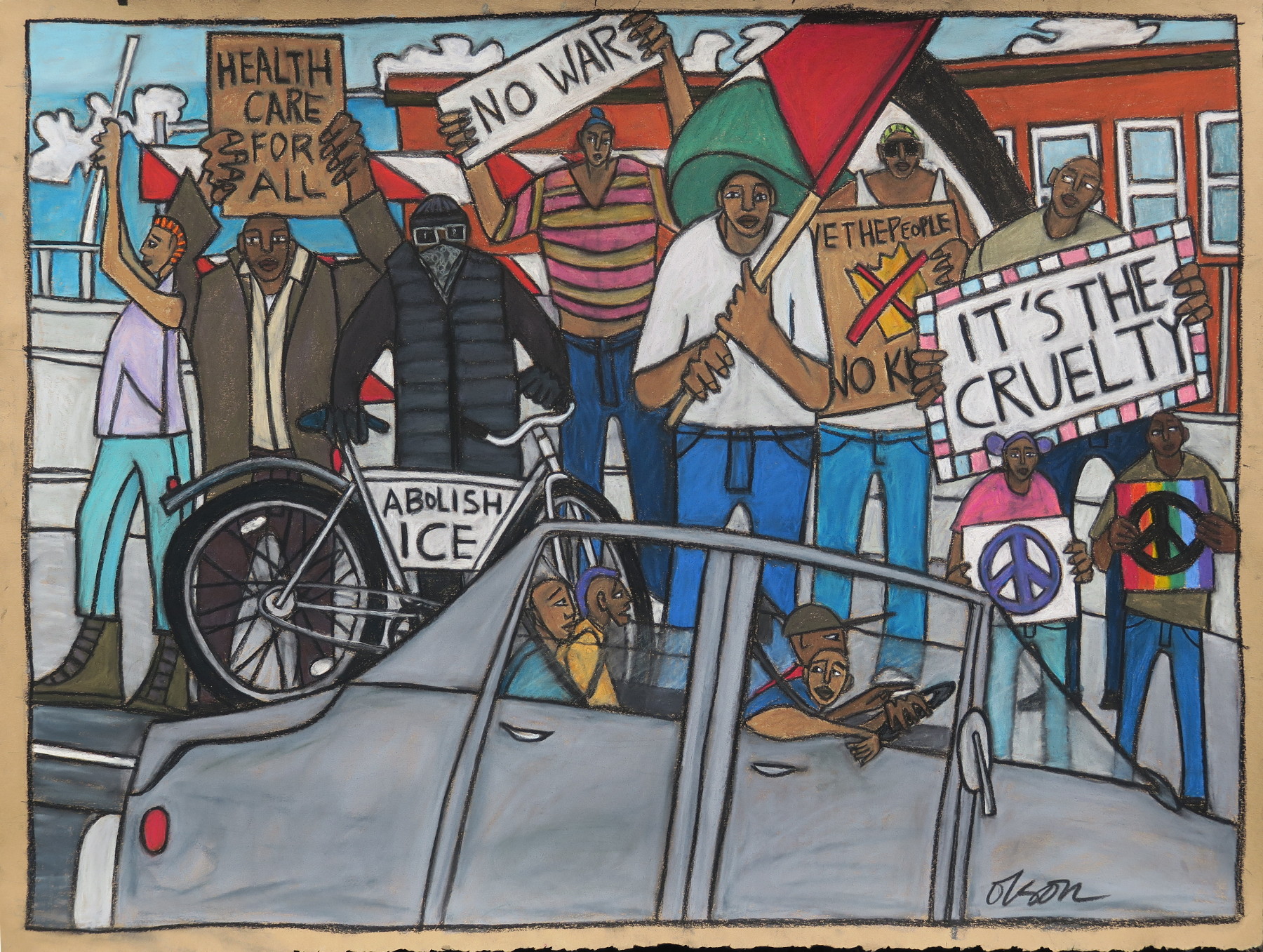
Art as resistance refers to the use of artistic expression to challenge, critique, and confront social, political, or cultural norms, often with the aim of sparking change or raising awareness about injustices.
Examples include: spontaneous street art and graffiti created in protest to the killing of George Floyd, Dante Wright, Breanna Taylor and others; Black Lives Matter murals, music and performances; Anti-apartheid murals as powerful visual statements opposing the racist regime; and Anti-war paintings by Picasso and Goya as well as and street art by Banksy just to name a few.
Know that art has been used by dictators and fascist regimes against us as well to maintain control. Examples include: WWII’s Nazi Germany’s graphic propaganda with swastikas’ and “Aryan ideals” which opposed modern art (Bauhaus) and expression. Their excessive pageantry created a false narrative of community support for their cruel policies; the Soviet Union glorifying cruel leaders like Stalin while silencing dissenting artists and communities who chose to speak out against the regime; and Mao in China used powerful graphics to reinforce loyalty to the communist party/Mao
Its important to know the key ways they employ art to maintain power: Dictators establish and maintain their authority through a carefully cultivated image of being powerful, infallible leaders. This is often achieved through widely circulating portraits, statues, and symbols of the leader to reinforce their authority and deify them. Creating monumental public buildings and monuments that convey a sense of grandeur, strength, and the regime’s dominance. Art is used to rewrite history, presenting a version that aligns with the regime’s narrative and justifies its actions. Authoritarian regimes tightly control artistic expression, promoting only the art that aligns with their political agenda and suppressing any forms or artists deemed subversive. Artists who resist face severe consequences like persecution, censorship, or worse.
Remember that art can also be a powerful tool for resistance against oppressive regimes. Artists often find ways to subtly embed messages of dissent or critique within their work, even under strict censorship. This can involve using allegory, metaphor, and other forms of symbolism to convey subversive meanings. Art, in this context, becomes a vital means of resistance, resilience, and maintaining individual autonomy. (Ms. Google)
I have found drawing a way to deal with anxiety about the fascist regime currently running our country. Join me in speaking up for our family and neighbor’s. Stay safe. Stay strong.
